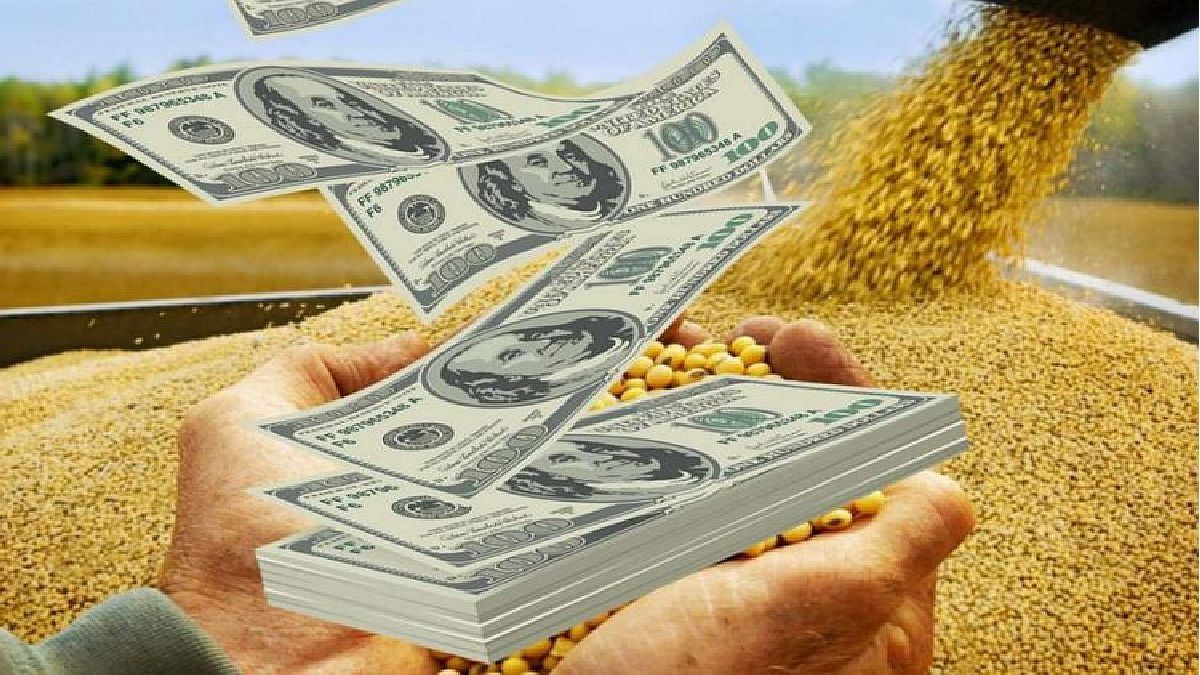He foreign exchange earnings in June it fell to US$1,581 million, the lowest level for a month of June in 16 years since 2007, according to the Agroindustrial Monitor of CIARA-SEC.
In the first six months of the year (January-June) the accumulated foreign exchange income was US$11,032 million, a real drop of US$8,113 million compared to the same period in 2022 when the record income of US$19,145 million. According to Pablo Adreani’s analysis based on industry and export purchase statements, It is estimated that producers have the equivalent of US$9.230 million in grains, a piece of information that could be key in the event that the Ministry of Economy can resort to a new soybean dollar.
Among other data from the sector, it is worth noting that:
– The oil industry at its worst, sharp drop in soybean milling in the January-May period. The accumulated soybean grinding was 1,922 million tons vs. 16,168 million in 2022 and 18,000 million in 2021.
– In contrast, the milling of sunflower is at a record 2023: in the period from January to May, the accumulated milling of sunflower reached a record of 1,710 million tons.
– Slight recovery of exports of the entire complex of soybeans, beans, oil and flour. In major exports of flour reached 2.1 million, soybean exports with strong increase reaching 556,000 tons, against 4,500 tons of the previous month. Oil exports, 443,000 tons.
Capture.PNG
Without the soybean dollar, the field’s foreign exchange income collapsed by more than 60% in June
Agricultural exports in Argentina experienced a significant decrease in foreign exchange earnings during June, as reported by the Chamber of the Oil Industry of the Argentine Republic and the Center for Grain Exporters (CIARA-CEC).
Agro-export companies liquidated US$ 1,581 million in June, which represented a year-on-year drop of 59%. The June settlements were 62% lower than those of last May, while in the first six months of last year, the grain-oilseed sector lost sales values abroad by 42%.
The entities maintained that the foreign currency inflow for the month of June “is the result of the meager coarse harvest, strongly impacted by the drought, the culmination of the special dollar of Decree 194/23 and the general economic situation.”
“The monthly income of foreign currency, transformed into pesos, is the mechanism that allows us to continue buying grain from producers at the best possible price,” the statement added.
The chambers explained that “Most of the income of foreign currency occurs well in advance of export, an anticipation that is around 30 days in the case of grain exports and up to 90 days in the case of oil exports and protein flours”.
They also clarified that “theStatistical comparisons between different periods are generally imprecise or inaccurate since currency settlement is strongly influenced by the commercial cycle of grains, which depends on various and changing exogenous factors such as international price fluctuations”.
Source: Ambito




